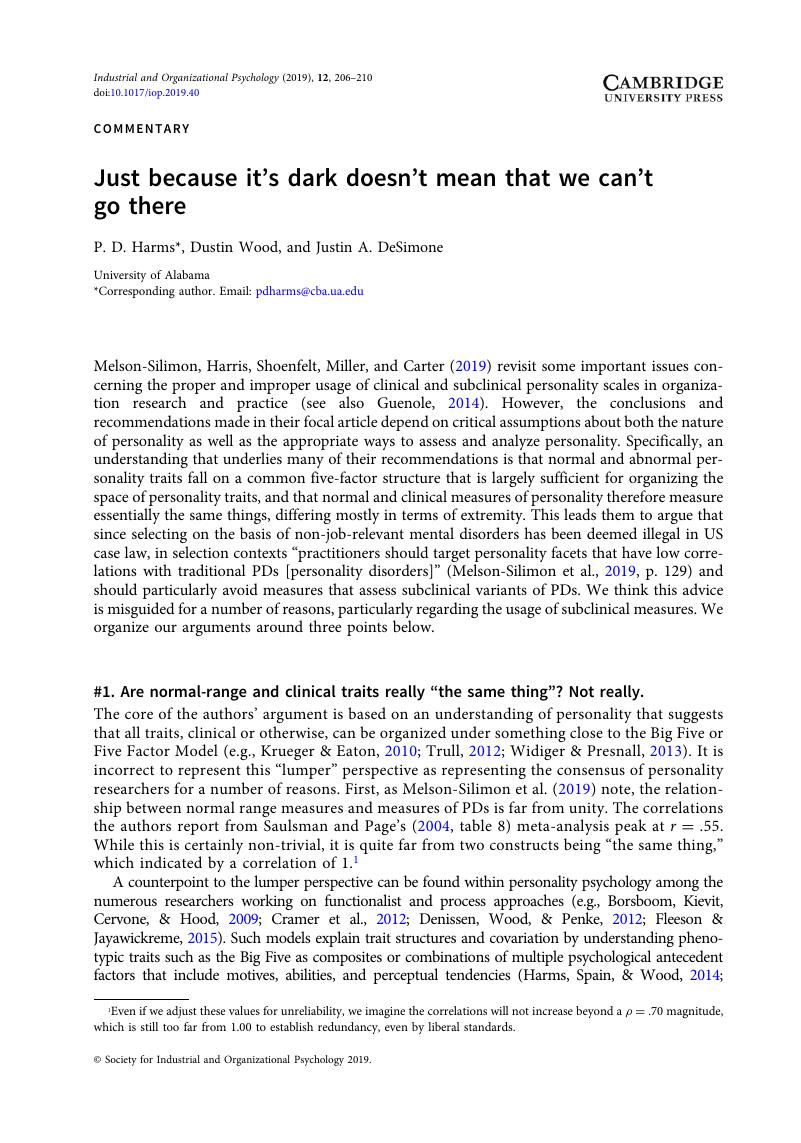Harms, P. D.,
Spain, S. M., &
Hannah, S. T. (
2011a, April). You underestimate the power of the dark side: The Big Five, subclinicals, and job performance. Poster presented at the 26th Annual Conference of the Society for Industrial and Organizational Psychology, Chicago, IL.
CrossRefGoogle Scholar 